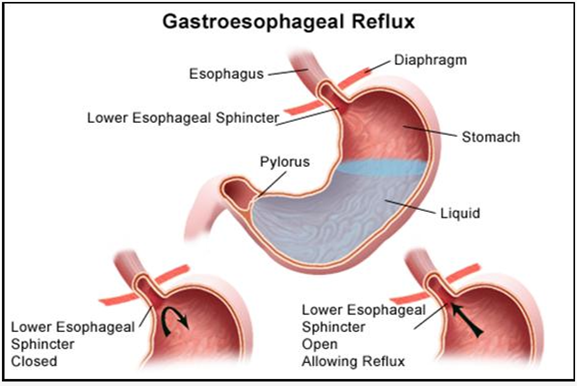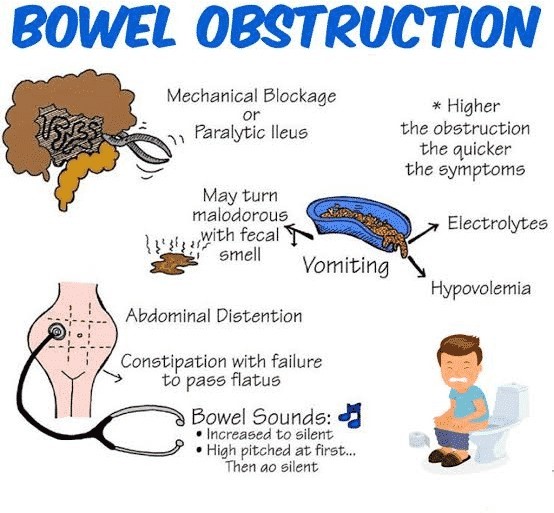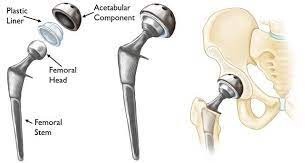The nurse is explaining the alteration in normal function to a patient recently diagnosed with gastroesophageal reflux disease (GERD). Which etiology contributing to GERD does the nurse include in the teaching session?
Incompetent lower esophageal sphincter.
Decreased pressure within the stomach.
Transient constriction of the lower esophageal sphincter
Prolonged constriction of the upper esophageal sphincter.
The Correct Answer is A
The lower esophageal sphincter (LES) is a muscular ring located between the esophagus and stomach. Its function is to prevent the backflow of stomach acid and contents into the esophagus. In GERD, the LES becomes weak or relaxed, allowing stomach acid to flow back up into the esophagus, leading to symptoms such as heartburn, regurgitation, and chest pain.

Nursing Test Bank
Naxlex Comprehensive Predictor Exams
Related Questions
Correct Answer is ["A","B","E"]
Explanation
Small bowel obstruction can lead to the accumulation of gastric contents above the obstruction, causing vomiting.
Obstruction of the small bowel can result in crampy, colicky abdominal pain and abdominal distention.
Electrolyte imbalances, such as hypokalemia (low potassium), can occur due to vomiting and inadequate intake in cases of small bowel obstruction.
The following finding is not directly associated with small bowel obstruction:
Pain relief after eating is more commonly associated with peptic ulcer disease, not small bowel obstruction.
While blood in the stool can be seen in some cases of bowel obstruction, it is more commonly associated with lower gastrointestinal bleeding or other conditions affecting the colon, rather than small bowel obstruction.

Correct Answer is C
Explanation
The patient bending over the sink while brushing teeth requires intervention by the nurse. After hip arthroplasty using the posterior approach, the patient should avoid bending at the hip greater than 90 degrees to prevent dislocation of the prosthesis. The nurse should instruct the patient to bend at the knees instead of the hips while brushing teeth or doing any other activity that requires bending. The other actions mentioned in the options are appropriate for a patient after hip arthroplasty.

Whether you are a student looking to ace your exams or a practicing nurse seeking to enhance your expertise , our nursing education contents will empower you with the confidence and competence to make a difference in the lives of patients and become a respected leader in the healthcare field.
Visit Naxlex, invest in your future and unlock endless possibilities with our unparalleled nursing education contents today
Report Wrong Answer on the Current Question
Do you disagree with the answer? If yes, what is your expected answer? Explain.
Kindly be descriptive with the issue you are facing.
